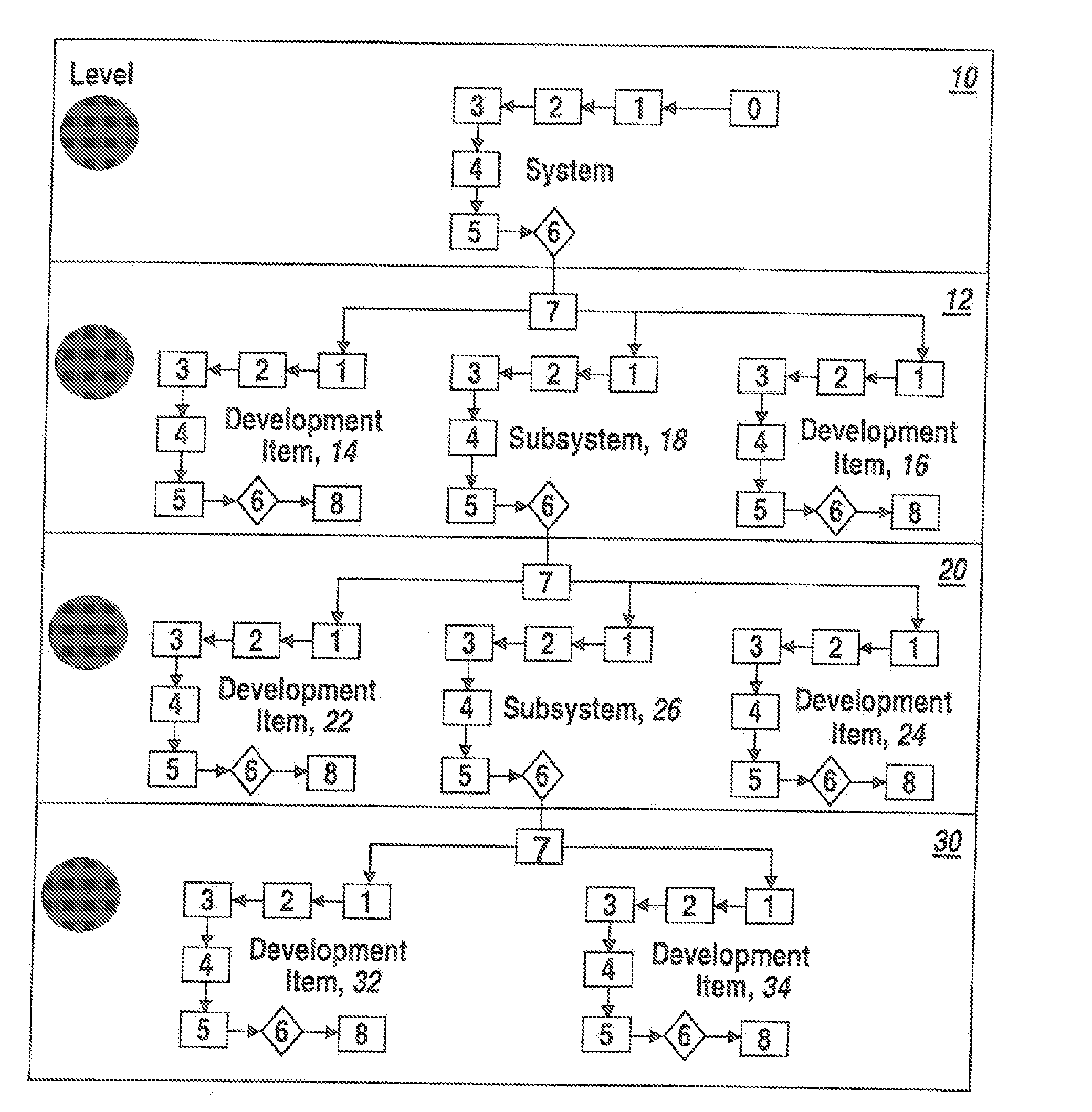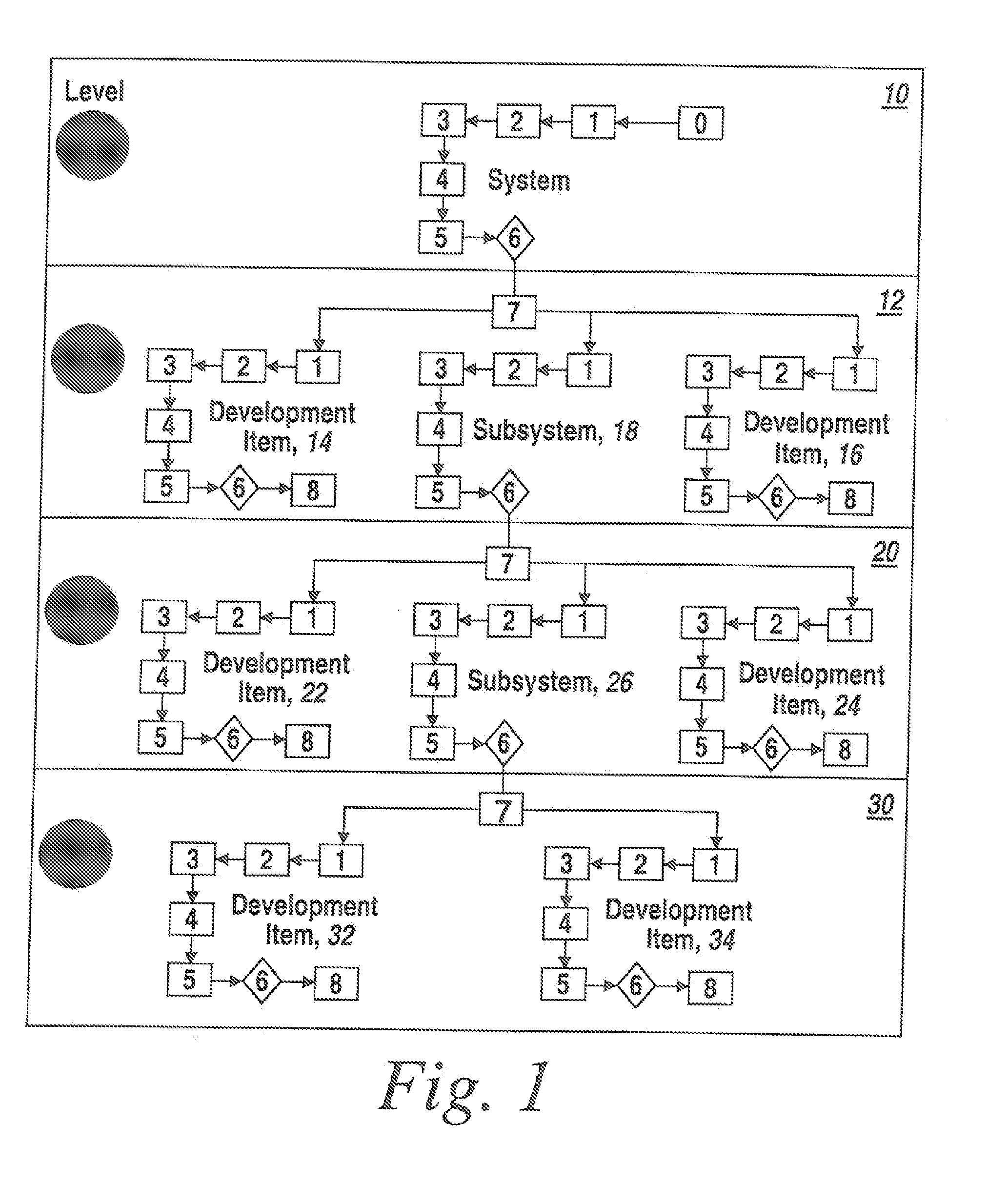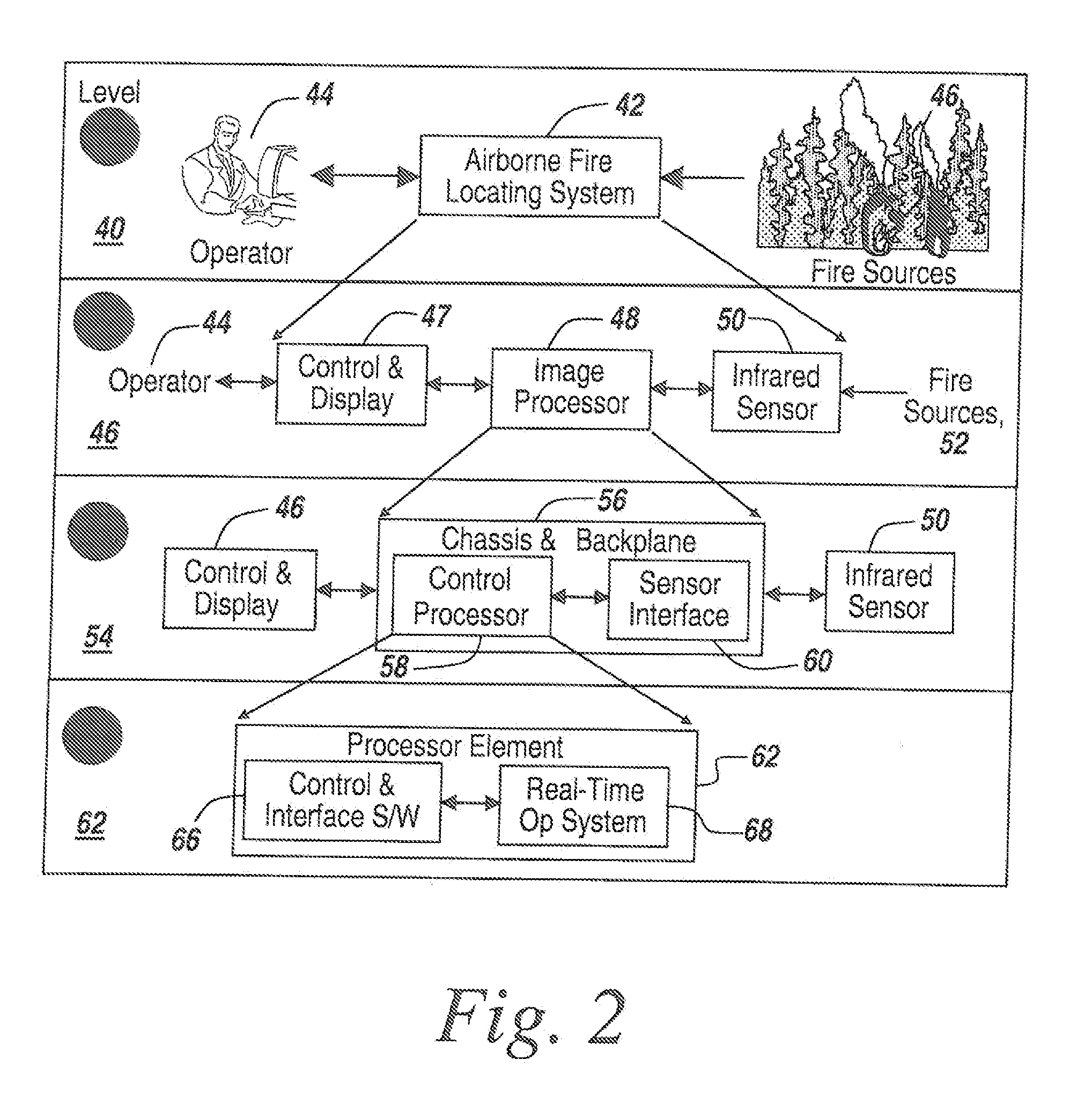System Design Combining Functional Decomposition And Object-Oriented Programming
a functional decomposition and system design technology, applied in the field of system design combining functional decomposition and object-oriented programming, can solve the problems of not being well adapted to a hierarchical structure, unable to easily manage the breakup of the system into an appropriate hierarchy, and unable to effectively develop larger and more complex products and systems. , to achieve the effect of reducing the amount of complexity in the system and facilitating the understanding of the system operation
- Summary
- Abstract
- Description
- Claims
- Application Information
AI Technical Summary
Benefits of technology
Problems solved by technology
Method used
Image
Examples
Embodiment Construction
[0077]In terms of notation to support the implementation of the functional object-oriented design framework, the Unified Modeling Language (UML) and its system-based variant SYSML are used due to UML's status as the de-facto standard for object-oriented development. In one embodiment, the subject functional object design methodology relies heavily on UML with some extensions that are specific to the specific development tool being used. Even though some of the notations used are closely aligned with the selected development tool, in nearly all cases there are alternate representations that can be achieved using purely UML or SYSML constructs.
[0078]Referring now to FIG. 1, this figure depicts the development of a hypothetical system by iteratively using the functional object design steps documented above.
[0079]In FIG. 1, Level 0, shown at 10, is the “System” or top-level of the development. As the FOD steps are performed at this level, the objects at the next level 12, in this case L...
PUM
 Login to View More
Login to View More Abstract
Description
Claims
Application Information
 Login to View More
Login to View More - R&D
- Intellectual Property
- Life Sciences
- Materials
- Tech Scout
- Unparalleled Data Quality
- Higher Quality Content
- 60% Fewer Hallucinations
Browse by: Latest US Patents, China's latest patents, Technical Efficacy Thesaurus, Application Domain, Technology Topic, Popular Technical Reports.
© 2025 PatSnap. All rights reserved.Legal|Privacy policy|Modern Slavery Act Transparency Statement|Sitemap|About US| Contact US: help@patsnap.com



